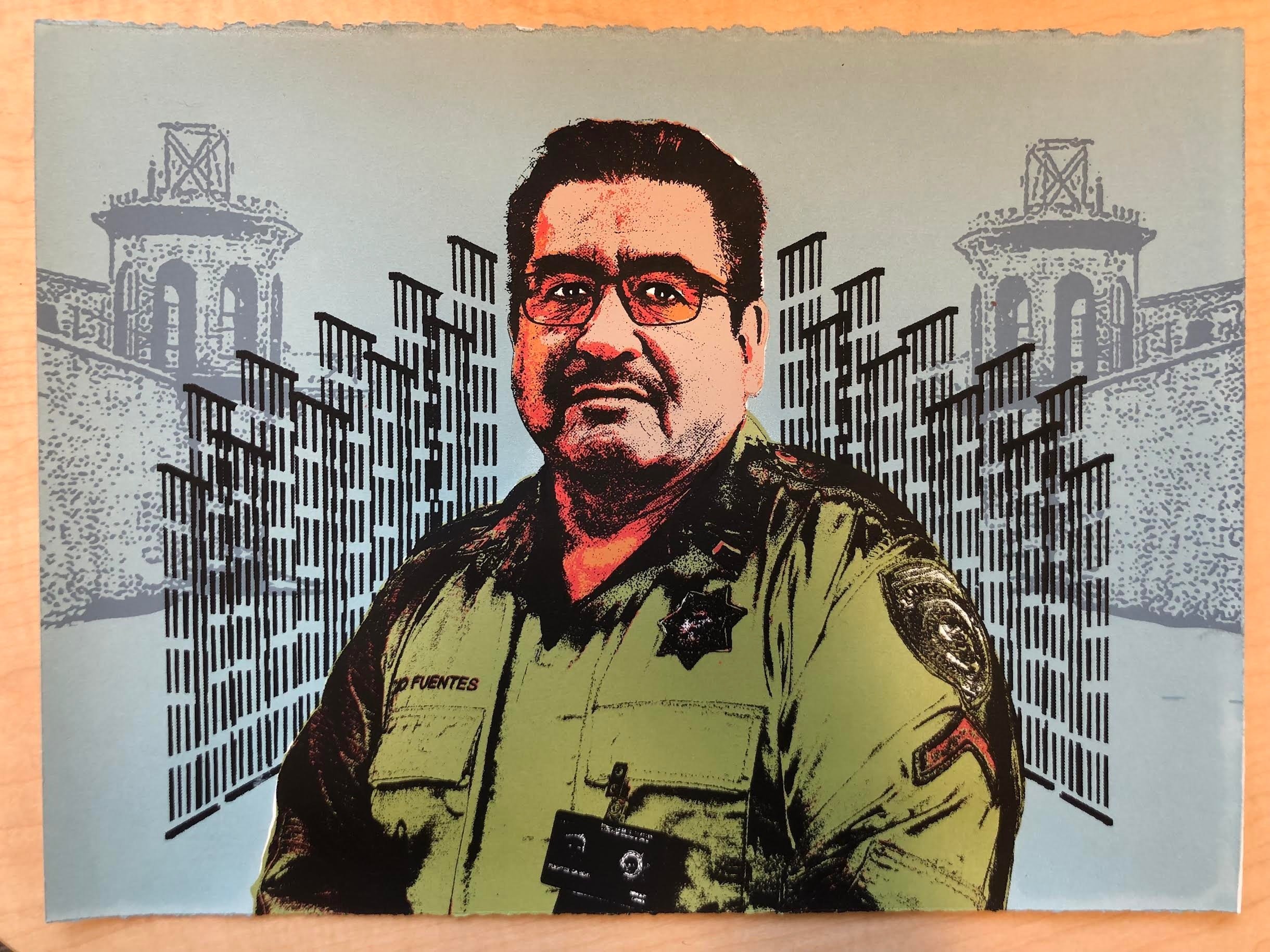Click on image to see FUENTES Film.
Esteban Gilbert Fuentes
Corrections Officer
West Side Saint Paul, Minnesota
Fuentes
Screen print, 11” h x 15” w
2023
Essential Worker: A Visual Narrative
Esteban now 58, was 26 years old and tired of working labor jobs when he accepted a position as a corrections officer at Stillwater prison. The Minnesota prison built in 1914 is the state's largest close-security institution for adult males. He comments that when he began, he was extremely intimidated as he did not know what to expect. The only thing he found familiar was that he recognized some of the prisoners who were from his neighborhood.
America has the highest rate of incarceration in the world. When COVID-19 struck, many jails and prisons were poorly equipped to provide even basic medical care. By December 2020, one in every five state and federal prisoners in the United States had tested positive for the coronavirus, a rate more than four times as high as the general population. In some states, more than half of prisoners had been infected (The Associated Press, December 18, 2020).
Esteban talks about the challenges within the prison system as the pandemic ensued. “Quarantines,” which were precautionary lockdowns, were justified as a safety measure even though it is more often used as a form of punishment. In mid-April of 2020, at least 300,000 people incarcerated were experiencing some form of solitary confinement. (Solitary Watch, June 2020) Many incarcerated people experienced being kept in small cells for nearly 24 hours a day with little activity or human contact—with devastating consequences to their physical and mental health. In fact, the United Nations has deemed it torture to hold people in such conditions for more than 15 days without meaningful human contact.
Esteban had to enforce the lockdown policies. He found himself working long shifts because the prison had chronic staff shortages as employees were told to stay home if they had been exposed to Covid-19. He also found it challenging to realize that he and other staff were the ones who were the threat of carrying the virus as they were leaving and re-entering the premises.
Esteban strategizes how to not let the work “get to him.” Prison guards have the second highest mortality rates of any profession; extreme stress, substance abuse, depression, workplace injuries and suicidal thoughts. Life expectancy of corrections officers is 59 years (compared to 75 years for the average American) and experience a disturbingly high 34 percent incidence of post-traumatic stress disorder. (Bureau of Justice Statistics, 2021)
Despite initial hopes that leaders would respond to the pandemic by releasing inmates, the prisons released almost no one. Successfully navigating this new normal will require deep reductions in prison and jail populations and concerted efforts to improve carceral healthcare. (www.prisonpolicy.org/virus)

